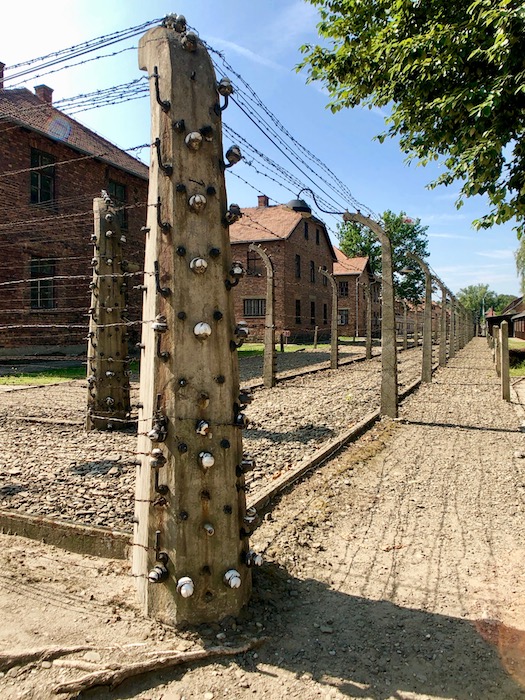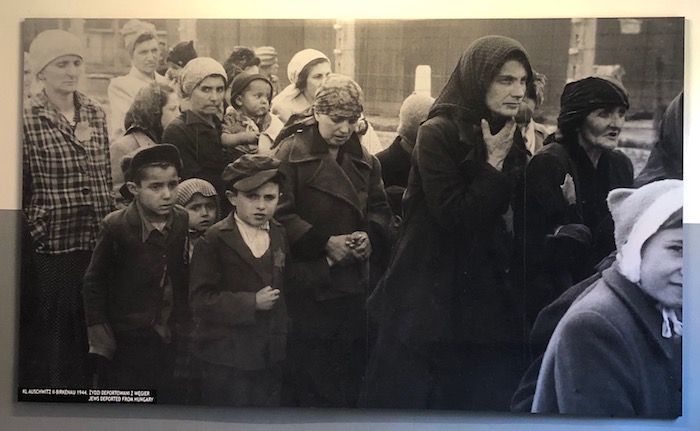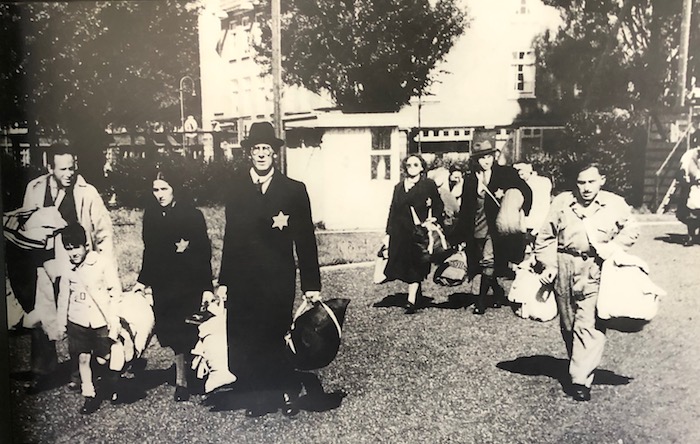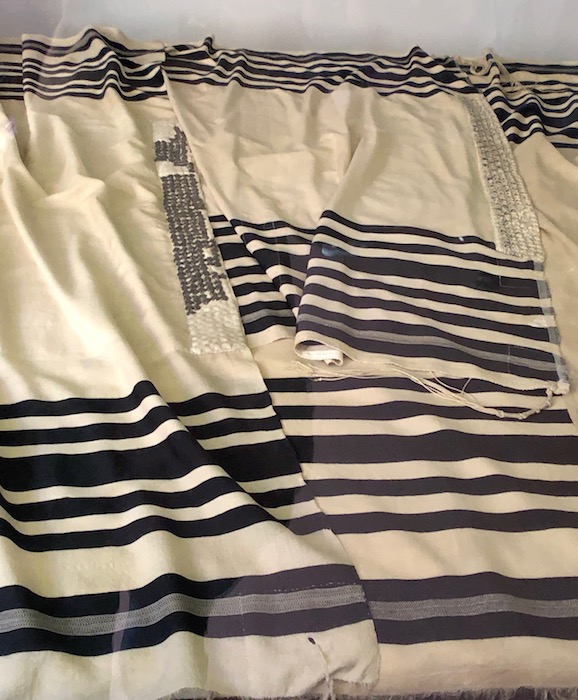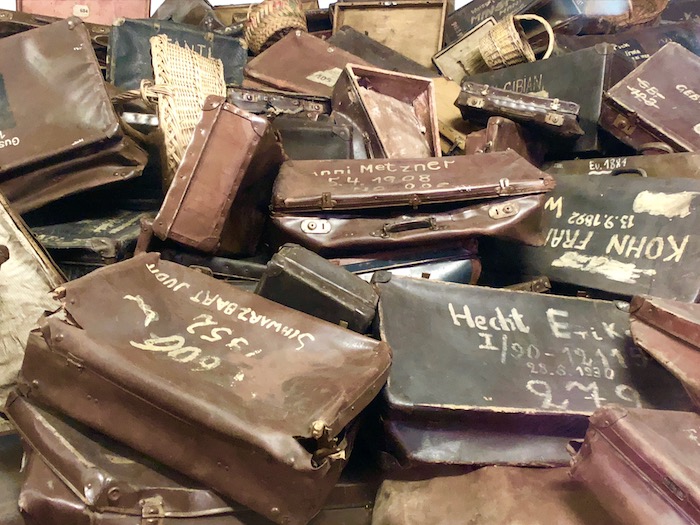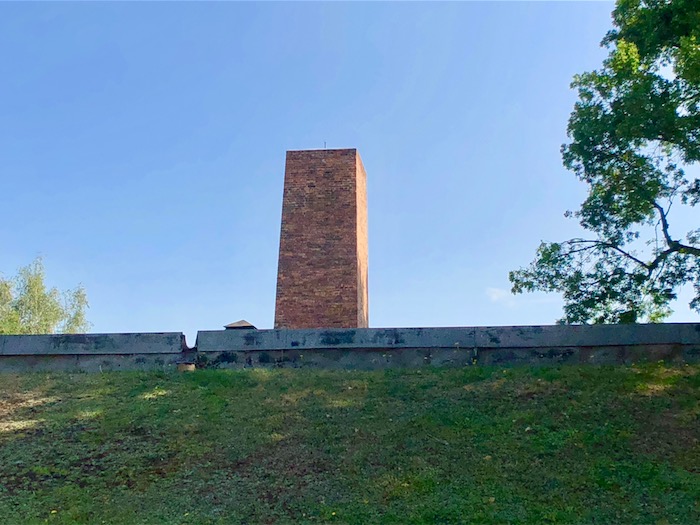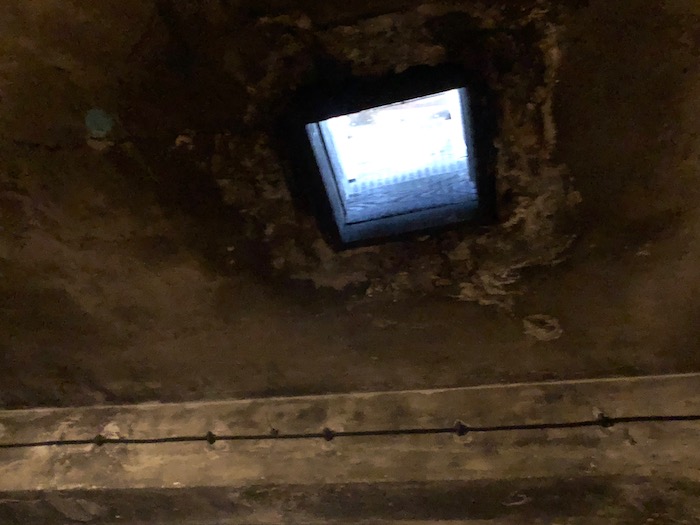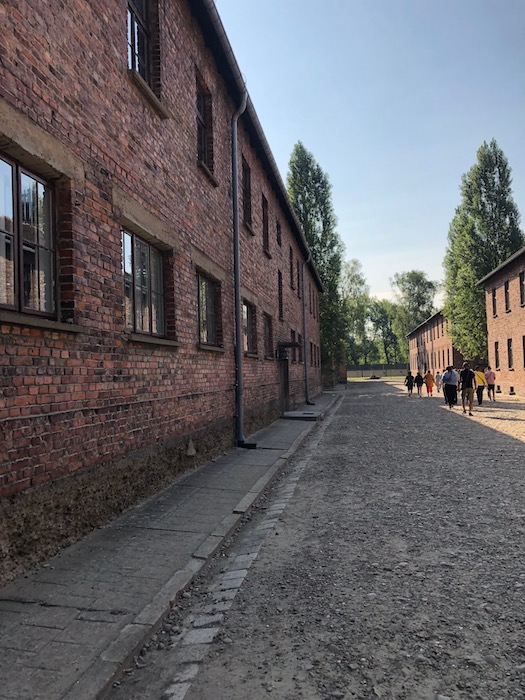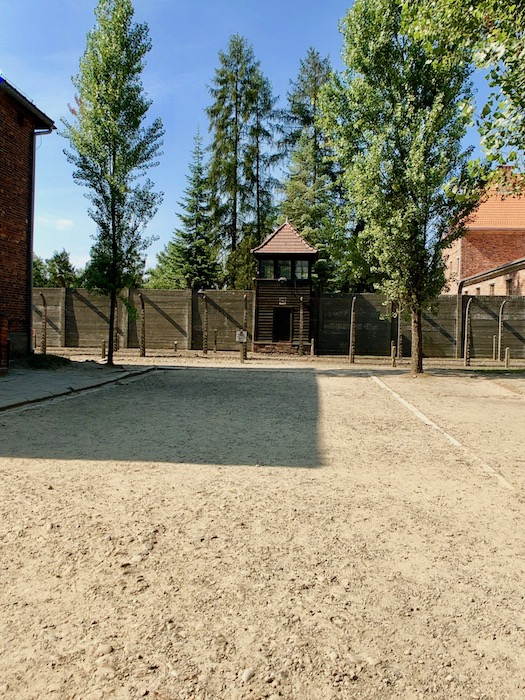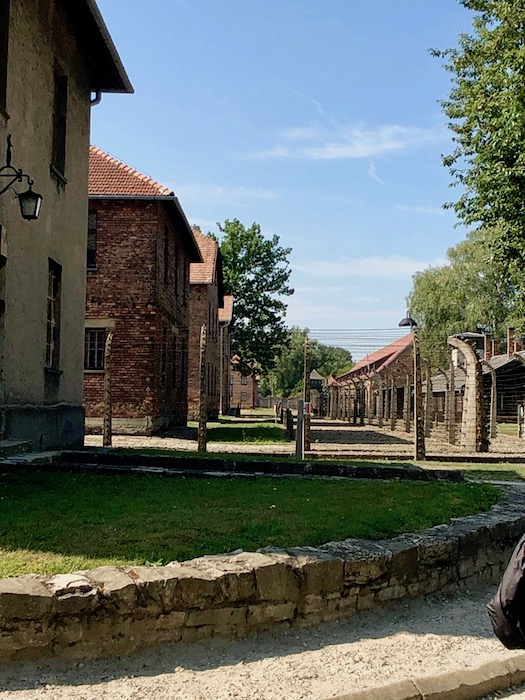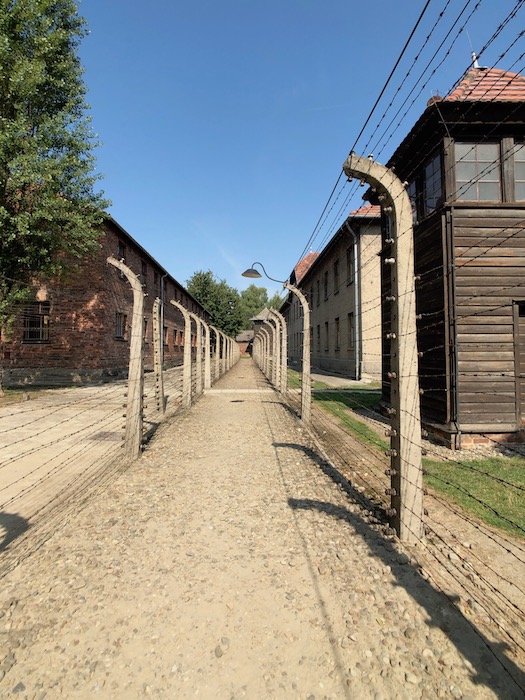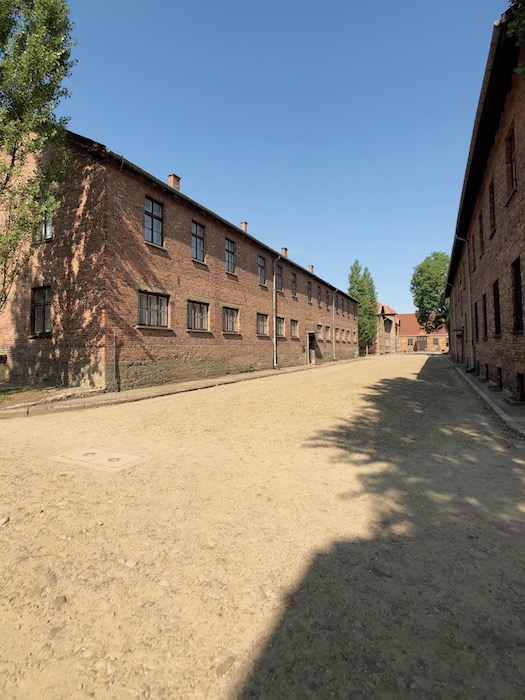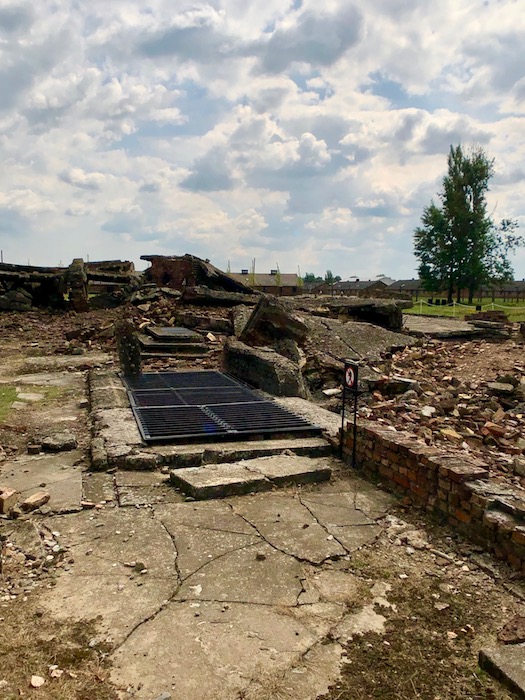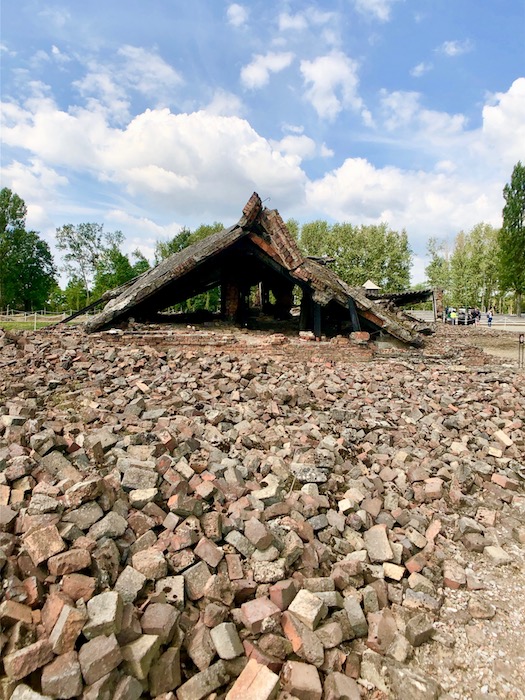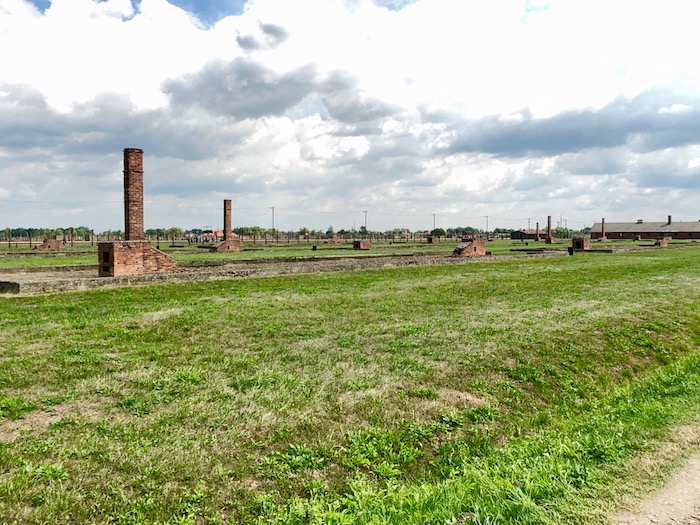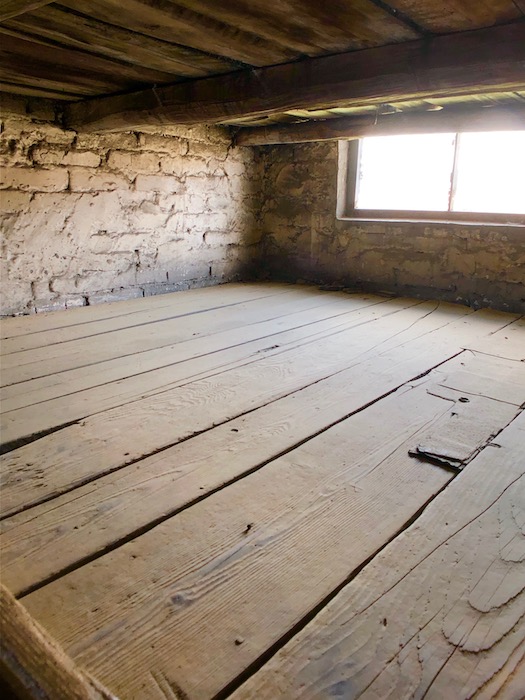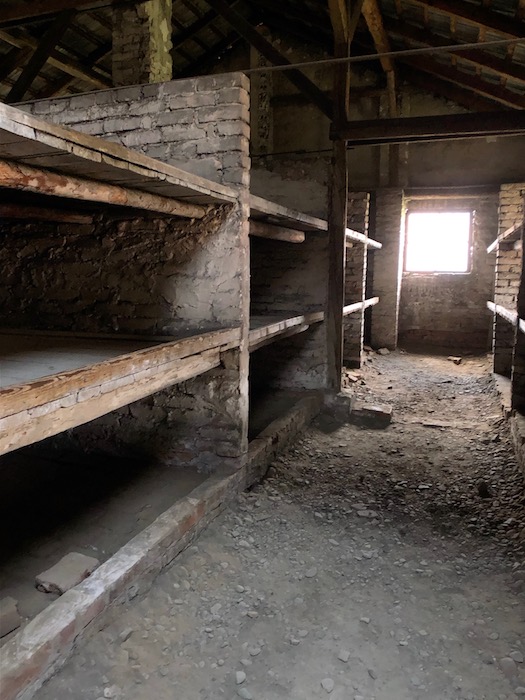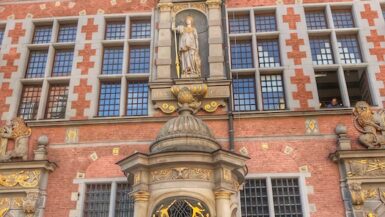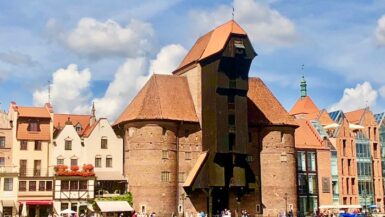August 5, 2019
“Those who do not remember the past are condemned to repeat it.” George Santayana

It is difficult to put into words my experience visiting the Auschwitz and Birkenau (Auschwitz II) camps. While it was educational, it was also horrifying, maddening, sobering, and emotional. That human beings committed such atrocities against other human beings is unbelievable and yet, it happened.
Some people have wondered why I chose to include such a somber place on my trip. To me, there was no choice. If we don’t bear witness to what has been done in the past, we will not fight to stave it off in the future. We must remember. We must honor. It is our duty as civilized human beings no matter our race, religion, sexual preference, disability, or color of our skin to never let something like this happen again.
The number of lives taken at the Auschwitz camps will never actually be known, as the identities of hundreds of trainloads of people were never documented. However, it is estimated that between 1.1 million to 1.5 million men, women, and children perished from starvation, sickness, or in mass murders in the gas chambers.
Most of those sent to the Auschwitz camps were not told they were going to a prison to die, they were told they were being relocated with hope for a brighter tomorrow. They were told to take their valuables and allowed up to 30kg of personal possessions each.
They would be stripped of those possessions at the selection ramps where camp “doctors” decided who would live to perform hard labor and who would die.
Often those with a death sentence were immediately taken to the preparation rooms where they were stripped of their clothing and ushered into large rooms for “showers.” Unbeknownst to the victims, they would be dead within 20 minutes of the Zyklon B pellets being dropped in through holes in the roof. Bodies were then cremated, the ashes dumped in large pits or shoveled into lakes, the memory of them to be washed away.
While the buildings (Blocks) are still standing at Auschwitz I, the grounds appear to be different from what it would have looked like back then. Grass and trees have been planted to add color and provide shade.
I almost wish they hadn’t. I think it would be better to leave it barren and messy – a stark reminder of what it was. While the exhibitions, photographs, and mass quantities of shoes, spectacles, prayer shawls, and suitcases taken away from the victims show the magnitude of the evilness that existed, I wanted the grounds to look less green. Many may disagree with my view (and I can only offer my opinion), but it almost felt disrespectful to have living things, such as plants, grass, and trees, where there had been so much death and destruction.
Birkenau (Auschwitz II) was a bit different. The train tracks still lead directly in through the Death Gate and it offers a haunting visualization of train cars full of people stopping at the selection ramps.

The Nazis burned most of the wooden barracks as they left, trying to cover up their inhumane acts. All that remains are the chimneys and cement foundations laid later to mark where the barracks had been. The only thing left of the destructive gas chambers and crematoriums is rubble – the Nazis blew those up as well.
The only buildings remaining are the barracks initially built with materials taken when the neighboring town was dismantled to make way for the camp. The Nazis didn’t have a chance to destroy those brick buildings.

The insides of the barracks are dark and dank, the floors made of dirt, and the three tiers of wooden bunks show how uncomfortable the living conditions were as they shoved 5-6 or more people in each cubby. As I turned to look at the long row of bunks, I could almost see the horrified and hollow looks of the men, women, and children I’d seen in the photographs in the exhibits at Auschwitz I. It was impactful.
I will not forget my time at Auschwitz and Birkenau, just as I will not forget my visit to Dachau in Germany. Visits like these stay with you and, I hope, make at least small changes in the lives of the people who pass through the gates free to leave them when they are done at the end of the day.
We must never forget.

